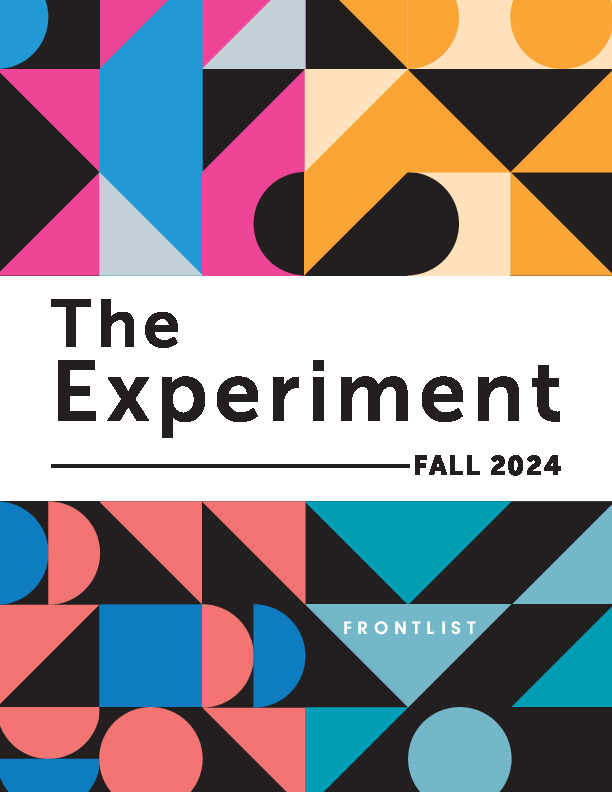Newsletter
Catalog
-
Monthly Archives: June 2015
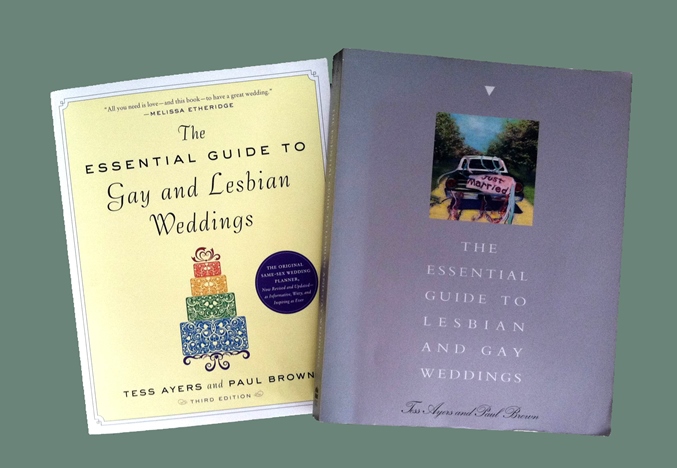
Right, the 1st edition of The Essential Guide to Gay and Lesbian Weddings, published in 1994 by Harper San Francisco. Left, the recent 3rd edition of the book published in 2012 by The Experiment.
Today, we get to celebrate the Supreme Court ruling which guarantees a nationwide right to same-sex marriage—once again, just in time for NYC’s annual LGBT Pride Parade.
Since Matthew’s original blog post, and the US v. Windsor decision, the number of states that allowed gay marriage had grown from 13 to 36—largely as a result of the Supreme Court’s inaction on same-sex marriage appeals in 2014. But June has once again proven to be a historic month for LGBT rights. Originally deemed LGBT pride monthto honor the 1969 Stonewall riots in Manhattan, the US v. Windsor decision was announced in June, and this latest decision comes once again, at the tail-end of the month. (So yes, we’ll be celebrating this weekend.)
Back in his 2013 blog post, Matthew chronicled his history with the book, The Essential Guide to Gay and Lesbian Weddings, by Tess Ayers and Paul Brown. To paraphrase his original recounting of its history:
Matthew happened to be the marketing manager for that book back at Harper San Francisco, when it was first published, in June 1994—with “faith that one day there would actually be gay and lesbian weddings.”
In the intro of the original edition of their book, Tess Ayers and Paul Brown wrote:
In other words, we approached this book as if same-sex marriage were suddenly legal.”
Today, 21 years almost to the day since Tess and Paul’s The Essential Guide to Lesbian and Gay Weddings was first published (ten years before Massachusetts became the first state to legalize gay marriage), the entire country over can say, “When we say wedding, we mean wedding.”
Tess and Paul: Twenty-one years may not quite qualify as “suddenly legal.” But your vision for a “different, better, more equal world” has now arrived.
 Paul Brown has a BA in theater arts from Harpur College, Binghamton University. Over the years he has worked in theater (treasured every moment), a bit in television (not so much), and a stint in “celebrity journalism” (seemed like a good idea at the time). For the past fifteen years Paul has taught Special Education in Los Angeles. He met Tess Ayers several months before her wedding over two decades ago (then called a “commitment ceremony”). When the honeymoon was over, they collaborated on the first version of The Essential Guide to Gay and Lesbian Weddings. Currently, Paul is working on a vocabulary and reading comprehension program for students with learning differences. He has never been married himself but he sure knows how to plan a wedding.
Paul Brown has a BA in theater arts from Harpur College, Binghamton University. Over the years he has worked in theater (treasured every moment), a bit in television (not so much), and a stint in “celebrity journalism” (seemed like a good idea at the time). For the past fifteen years Paul has taught Special Education in Los Angeles. He met Tess Ayers several months before her wedding over two decades ago (then called a “commitment ceremony”). When the honeymoon was over, they collaborated on the first version of The Essential Guide to Gay and Lesbian Weddings. Currently, Paul is working on a vocabulary and reading comprehension program for students with learning differences. He has never been married himself but he sure knows how to plan a wedding.
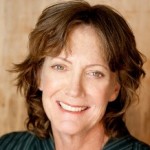 Tess Ayers has worked in advertising and graphic design, written for game shows, and was a producer on a number of television talk shows. When she and her partner Jane Anderson decided to have a wedding ceremony in 1992, they were unable to find a proper guide for gays and lesbians, and The Essential Guide to Gay and Lesbian Weddings was conceived and born two years later. In the years since then Tess has been busy raising their son, now 17, and works on the boards of several not-for-profit organizations. Tess, Jane, and Raphael happily divide their time between Los Angeles and Marin County.
Tess Ayers has worked in advertising and graphic design, written for game shows, and was a producer on a number of television talk shows. When she and her partner Jane Anderson decided to have a wedding ceremony in 1992, they were unable to find a proper guide for gays and lesbians, and The Essential Guide to Gay and Lesbian Weddings was conceived and born two years later. In the years since then Tess has been busy raising their son, now 17, and works on the boards of several not-for-profit organizations. Tess, Jane, and Raphael happily divide their time between Los Angeles and Marin County.
Note: The e-book of The Essential Guide to Gay and Lesbian Weddings is only $2.99 at Nook for a limited time!
Posted in Blog
Comments Off on “When We Say Wedding, We Mean Wedding”: Part II
This guest blog comes from Seth Darling, a scientist specializing in energy and water research and co-author of How to Change Minds About Our Changing Climate.
“Laudato Si,” Pope Francis’ recently released encyclical on the environment, shines the Vatican’s glaring spotlight squarely on humankind’s disruption of our climate. And it won’t be the first time—although you might think so from the uproar among many conservative politicians. His predecessors John Paul II and Benedict XVI themselves expressed increasingly dire concern regarding our abuse of the earth’s atmosphere and environment.
The Church’s “integral ecology” views climate disruption as a moral issue; caring for our fellow humans means caring for our environment. Because addressing climate change will mean massive changes to our energy infrastructure, which is currently dominated by fossil fuels, business interests vested in fossil energy feel threatened, and they are mobilizing their proxies in response. So, in an unusual twist, politicians like James Inhofe, chairman of the Senate Environment and Public Works Committee and a vehement climate change skeptic, attack the Pope with statements such as “The Pope ought to stay with his job, and we’ll stay with ours.” The irony of implying that science is in fact the Senate’s job, rather than legislating, was apparently unintentional.
Sen. Rick Santorum, a Republican presidential candidate and devout Catholic, stated on a Philadelphia radio show that “when we get involved with political and controversial scientific theories, then I think the Church is probably not as forceful and credible.” These sentiments are echoes of the business-bankrolled Heartland Institute’s efforts to sway Pope Francis from the tenet of integral ecology. The truth is that the science of climate change, although most definitely political, is anything but controversial.
Our planet is warming, and greenhouse gas emissions from the burning of coal, oil, and natural gas are the biggest culprits. The situation is already grim, and it’s getting worse all the time. We can debate which solutions to climate disruption offer the greatest benefit, but not whether there is a problem. That case is closed. But there is a bigger question here: who can speak for science?
Climate scientists, in particular, have the credentials to speak authoritatively on the issue of climate change, but are they the only ones? (The idea that the entire field is embroiled in a conspiracy to frighten taxpayers into increasing their research funding is so ludicrous it renders even this parenthetical a waste of space.) Leading conservative politicians from Mitch McConnell to Marco Rubio to Bobby Jindal have all trotted out the excuse “I’m not a scientist” when asked about climate change as a means of avoiding both overtly refuting the scientific consensus and, unfortunately, taking action. This tactic has the additional, subversive effect of hinting that the science is unsettled without saying so explicitly.
You don’t have to be an astrophysicist to talk about the earth revolving around the sun. Being a scientist is not a prerequisite to talking about science that is overwhelmingly certain. The charge is not to perform a scientific study, rather, it is simply to communicate established science to others. If we want to understand the complex role of aerosols on atmospheric warming, let’s ask the climate scientists; if we want to spread the word that the atmosphere is warming, who better than those with large audiences and a mandate to improve society for our fellow humans—politicians and, surely, the Pope.
The Roman Catholic Church has an enormous flock—estimated at 1.2 billion—and a papal encyclical is a powerful tool for mobilizing a global effort. Science and the Church haven’t always seen eye-to-eye, but as a society, we must seize the opportunity afforded by the confluence of interests outlined eloquently in Laudato Si. Pope Francis’ pulpit can amplify the alarm raised by the scientific community. The IPCC’s Fifth Assessment Report, released last year, was the community’s strongest statement to date. It summarizes mountains of climate science studies and finds a changing climate caused by human activity and lays out its frightening consequences.
All of this is coming to a head. The 2015 United Nations Climate Change Conference will be held in Paris later this year. The objective of the 2015 conference is to reach, for the first time in over two decades of international negotiations, a binding and universal agreement on climate action. The Vatican’s voice has joined the chorus. Let’s hope it drowns out the skeptics, erases the false debate, and brings together our diverse planet to address the greatest challenge we have ever faced as a species. This opportunity is too big, too important to miss.
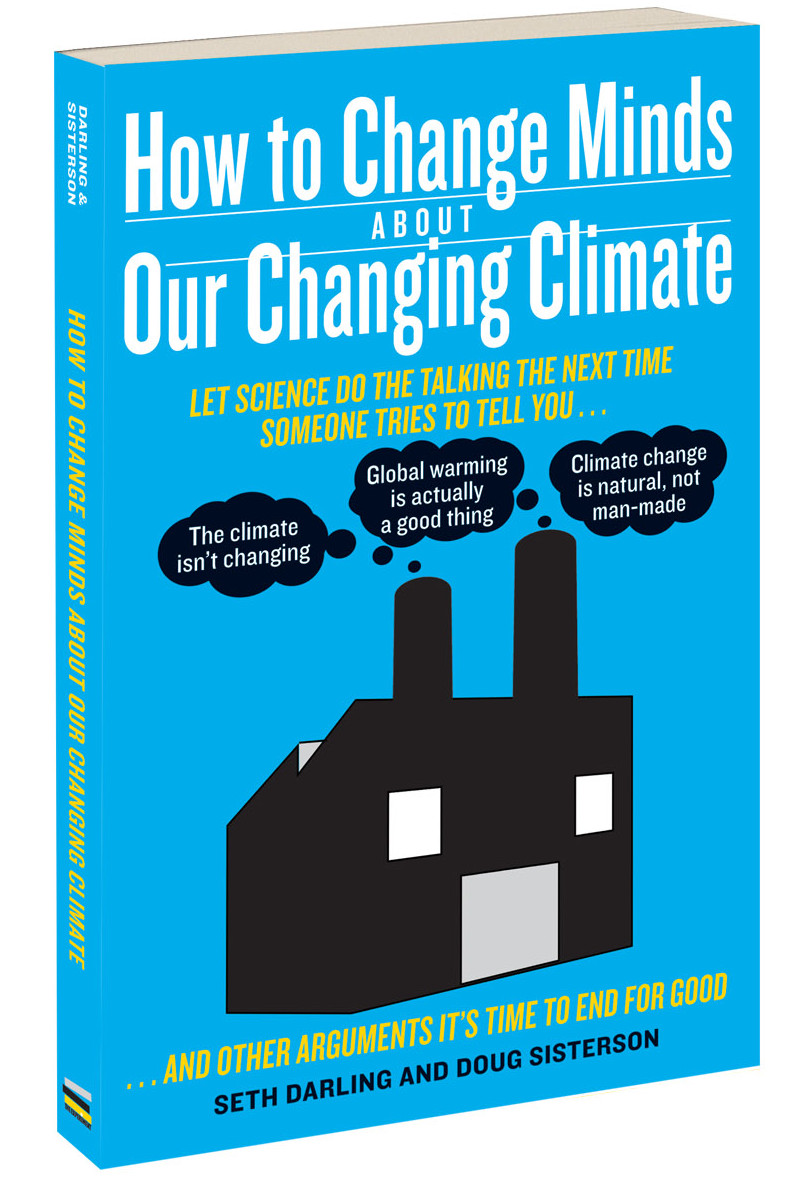 Seth B. Darling received his PhD in physical chemistry from the University of Chicago, after which he was awarded the Glenn Seaborg Distinguished Postdoctoral Fellowship at Argonne National Laboratory in Illinois. He is now a scientist in the Center for Nanoscale Materials at Argonne National Laboratory and a fellow at the Institute for Molecular Engineering at the University of Chicago. His research touches on many aspects of molecular science and engineering, with a particular focus on solar energy. He is co-author of How to Change Minds About Our Changing Climate.
Seth B. Darling received his PhD in physical chemistry from the University of Chicago, after which he was awarded the Glenn Seaborg Distinguished Postdoctoral Fellowship at Argonne National Laboratory in Illinois. He is now a scientist in the Center for Nanoscale Materials at Argonne National Laboratory and a fellow at the Institute for Molecular Engineering at the University of Chicago. His research touches on many aspects of molecular science and engineering, with a particular focus on solar energy. He is co-author of How to Change Minds About Our Changing Climate.
Posted in Blog
Comments Off on Guest Blog: Climate Disruption—An Infallible Truth

This guest blog post comes from Keiron Pim, author of Dinosaurs: The Grand Tour, and lifelong dino enthusiast.
No one went to see Jaws for a lesson in marine biology, and I don’t suppose many serious ornithologists exercised themselves over Alfred Hitchcock’s unfair portrayal of avian-kind in The Birds.
So to go and see a Hollywood blockbuster about man-eating dinosaurs and complain about its lack of palaeontological accuracy is to miss the point in some style. Jurassic World, which opened this weekend to global record takings, was never likely to act as a showcase for the very latest vision of the Mesozoic era. You might as well point out that most of the dinosaurs featured–Tyrannosaurus, Velociraptor and Ankylosaurus to name a few–are from the Cretaceous period rather than the Jurassic. What matters to film directors and most cinemagoers alike is telling the most gripping story possible, and wherever there’s a conflict between that and the facts, there will only ever be one winner.
Still, from a palaeontologist’s point of view you can see why it would be frustrating. For one, I’m sure that they’d argue the truth is actually far more interesting, and I’m with them on that. Now, I hugely enjoyed Jurassic World as a piece of entertainment, and even if it was sufficiently formulaic that you could guess with 100% accuracy which characters would end up clamped between a theropod’s gigantic jaws, it was great fun being taken along for the ride.
However, even if your priority is thrilling your audiences ahead of educating them, in director Colin Trevorrow’s case, opting for a little more realism could have increased the thrills by making the dinosaurs even scarier. On the one hand, the film’s concept has been brought right up to date, with the old Jurassic Park becoming a vividly imagined complex containing a Seaworld-style aquarium containing an immense Mosasaurus (too immense for some experts’ tastes, they were in reality around half this size at up to 18m long, but again I refer you to my point above), great sauropod-populated plains through which visitors can roll in a (supposedly) dino-proof glass ball, and hologrammatic ‘raptors’ inhabiting the visitor center.
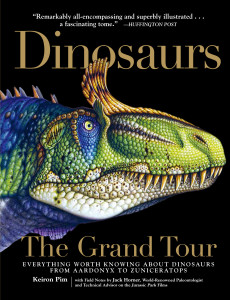 But to anyone who has read a book or watched a documentary about dinosaurs in the past decade–which is to say a fair share of the world’s population–amid all this brilliantly realized context the stars of the show will look a touch old-fashioned. This in turn lends them a quaint quality that undermines the fear factor. It’s probably absurd even to talk about believability with regard to Jurassic World, but the premise would be more believable–and thus more chilling–if the dinosaurs appeared how we currently believe them to have appeared. Instead they’re more reminiscent of the scaly Godzilla-type monsters of old than of the frighteningly strange, birdlike, vibrantly colored feathered beasts that populate the pages of recent books (such as my Dinosaurs: the Grand Tour).
But to anyone who has read a book or watched a documentary about dinosaurs in the past decade–which is to say a fair share of the world’s population–amid all this brilliantly realized context the stars of the show will look a touch old-fashioned. This in turn lends them a quaint quality that undermines the fear factor. It’s probably absurd even to talk about believability with regard to Jurassic World, but the premise would be more believable–and thus more chilling–if the dinosaurs appeared how we currently believe them to have appeared. Instead they’re more reminiscent of the scaly Godzilla-type monsters of old than of the frighteningly strange, birdlike, vibrantly colored feathered beasts that populate the pages of recent books (such as my Dinosaurs: the Grand Tour).
There is, however, one way in which the science behind Jurassic World is starting to seem more realistic now than was once the case. Its main premise is that, under pressure to boost visitor numbers, the attraction’s laboratory scientists have concocted a genetically modified hybrid dinosaur that they have named Indominus rex. This gargantuan beast combines genes from cuttlefish (allowing it to change color for camouflage), treefrogs (for thermal regulation), Tyrannosaurus and another dinosaur, which to describe further would give away part of the story. And according to the prominent American palaeontologist Jack Horner, who served as Spielberg’s technical adviser and contributed a section in my book describing where to track down dinosaur history in the USA, there is indeed the possibility of a strange sort of pseudo-dinosaur being created this way.
This project arose out of a failed bid to see whether some remnants of what has been claimed to be genuine T. rex soft tissue would yield DNA. Horner and his colleagues started by accepting that there is no chance of resurrecting a single dinosaur’s complete DNA sequence, as it begins to degrade within thousands of years, and the last non-avian dinosaurs died out around 65 million years ago. One useful way of looking at this is to liken an animal’s DNA profile to a novel of, say, 300 pages. Even if palaeontologists managed to extract 99 per cent of a dinosaur’s DNA, they would be left reading a book which had three pages ripped out, and would have to deduce the remainder of the story by guessing all the words and placing them in precisely the right order. In other words, it’s impossible.
But genetic manipulation is not impossible. In fact, Professor Horner and colleagues have been working on just such a project over the past five years. Given that resurrecting a Mesozoic dinosaur seems a non-starter, instead they decided to focus on manipulating the dinosaurs that live around us today: also known as birds. When he was growing up in Montana, Professor Horner had two wishes: to be a palaeontologist and to have a pet dinosaur, and having achieved the first of these he’s trying to make the second a reality, as well. In 2009 he and his colleagues announced their intention to create a ‘Chickenosaurus’, and after years of silence they announced in November that they were making some progress.
In general terms, to bring out birds’ hidden ancestral characteristics and reactivate the dinosaur within, there are three techniques at scientists’ disposal.
One is selection: just as centuries of work by dog-breeders turned wolves into Chihuahuas, and horticulturalists select the most beautiful roses to develop new hybrids, they know that by mating individual birds in which they have already stimulated latent dinosaur features, these features will be even stronger in the birds’ offspring.
The second method is transgenesis, the transplanting of genes from one organism into another. There are plenty of precedents for this, from genetically modified crops to ‘knockout mice.’ In the last 20 years scientists have bred thousands of varieties of these mice to research treatments for human diseases. They’re so-called because each strain has a different gene removed or ‘knocked out’ and replaced with another. For instance, one has a gene that inhibits the replication of tumour cells, which could help tackle cancer.
Related to this, the third technique is termed ‘atavism activation’. Atavistic characteristics are ones that belonged to animals’ ancient ancestors and are retained in a very faint form–but that occasionally pop up again and manifest themselves as fully developed features. Horner gives a couple of examples: for one, all humans have a tailbone, known as a coccyx, but very rarely babies are born with a tail. (Yes, really. Recent cases have been reported in India and China, and the technical term is a ‘caudal appendage’.) Snakes are another example: long ago they evolved to lose their legs, but their skeletons reveal tiny spurs of bone where you would expect the limbs to be–and sometimes snakes are actually born with these legs developed.
Horner’s ‘reverse engineering’ project rests on the fact that birds have some strange vestigial throwbacks as well. A chicken embryo has a tail, a gene that can cause teeth to grow in its beak, and three long finger-bones that form hands very similar to those of the primitive bird Archaeopteryx (which lived 147 million years ago) and the feathered dinosaur Velociraptor, which lived 75 million years ago (and which incidentally was a feathery little hunter the size of a turkey rather than the big scaly creature depicted in Jurassic World). But by the time the chick hatches, genes have kicked into action to make the tail recede to a stub, prevent the teeth from emerging, and fuse the handbones together into a wing.
If these genes can be identified, then they can be removed. And if they can be removed, then there should be nothing to stop a chicken being born with a tail, teeth and clawed hands: in other words, a ‘Chickenosaurus’.
Detractors point out that Professor Horner’s project, which will take years of gradual genetic tinkering, would not recreate an extinct genus of dinosaur. And naturally, though perhaps irrationally, there are those who fear the possible consequences of creating new dinosaurs. It’s a long step, however, from creating a ‘Chickenosaurus’ to Indominus rex.
But quite aside from the curiosity value, those involved are convinced of the project’s scientific worth. His colleague Hans Larsson at McGill University has said: “It’s a demonstration of evolution. If I can demonstrate clearly that the potential for dinosaur anatomical development exists in birds, then it again proves that birds are direct descendants of dinosaurs.”
If they ever achieve this then surely they would succeed where even Jurassic World has failed and achieve the rare feat of thrilling and fascinating both scientists and the general public alike.
Posted in Blog
Comments Off on Guest Blog: The Real World: Jurassic Park
Father’s Day is just around the corner and if you’re anything like us, that probably means a last minute rush to the store to pick up a generic tie or package of golf balls. Why fathers seem so hesitant to actually identify a gift they would really like is a question for another time.
Back in May, just after Mother’s Day, Nick Bolton wrote this incredibly beautiful piece about his mother’s passing and how important it was to him that he was able to cherish her memory through her thousands of books.
“…I want her physical books. I want to be able to smell the paper, to see her handwriting inside, to know that she flipped those pages and that a piece of her lives on through them.”
We can’t think of a better example why you should invest in (and inscribe!) print books for your dad. It’s a way to create a shared memory. So this year, instead of the usual tie clip or bundle of socks, we suggest getting your dad a book he’ll want to read with a personal note. And we just happen to have a couple of ideas!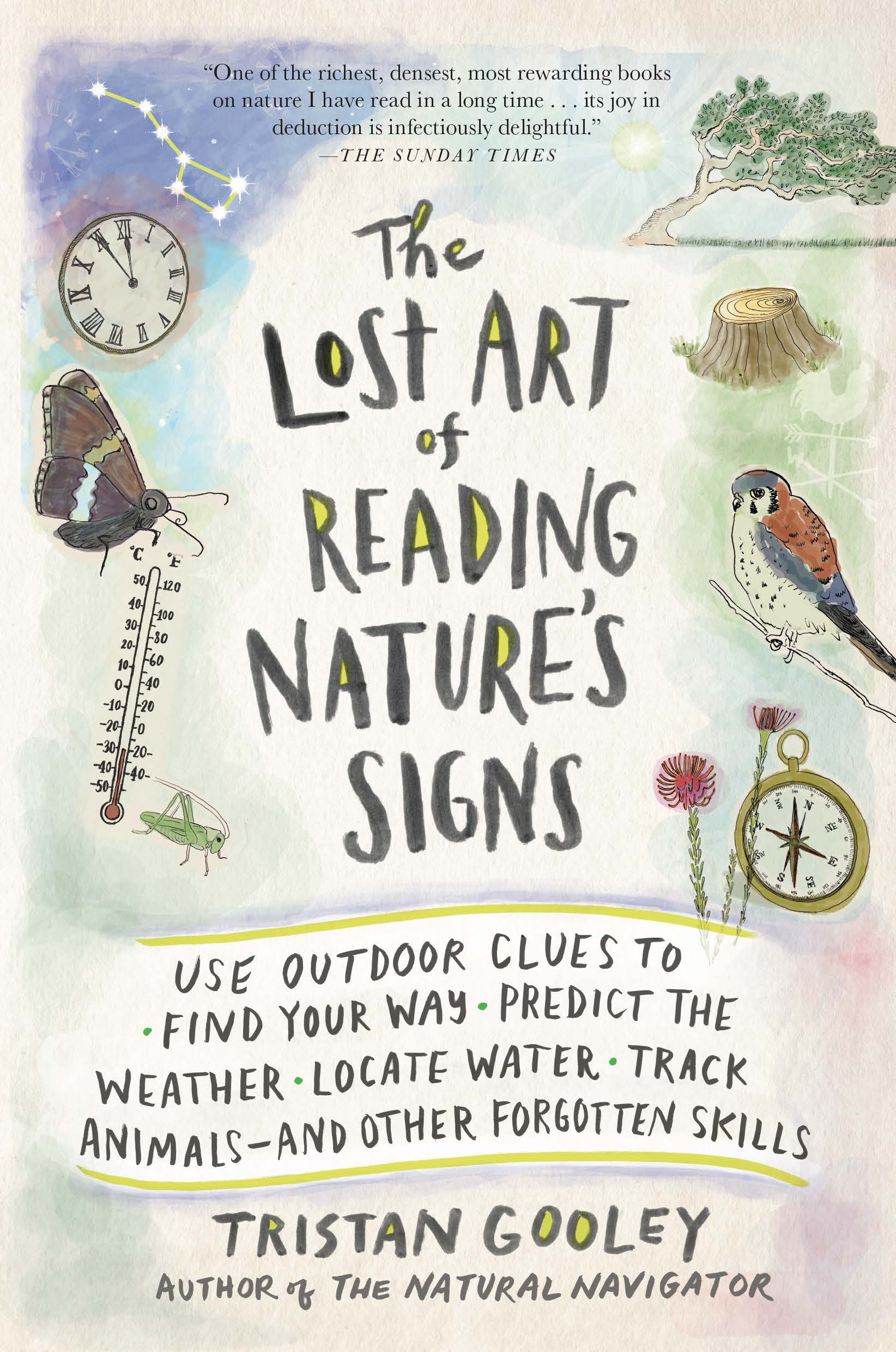
For the outdoors-y father: The Natural Navigator by Tristan Gooley
Does your father love to wander? Do you worry that sometime he will just wander until he’s lost his way? We have the guide for him and the antidote to your fears with The Natural Navigator. Outdoor expert, Tristan Gooley, unlocks the directional clues hidden in the sun, moon, stars, clouds, weather patterns, lengthening shadows, changing tides, plant growth, and the habits of wildlife, making this the perfect book for any outdoor-loving dad.
Also, be on the lookout for Gooley’s next book, The Lost Art of Reading Nature’s Signs, available July 31!
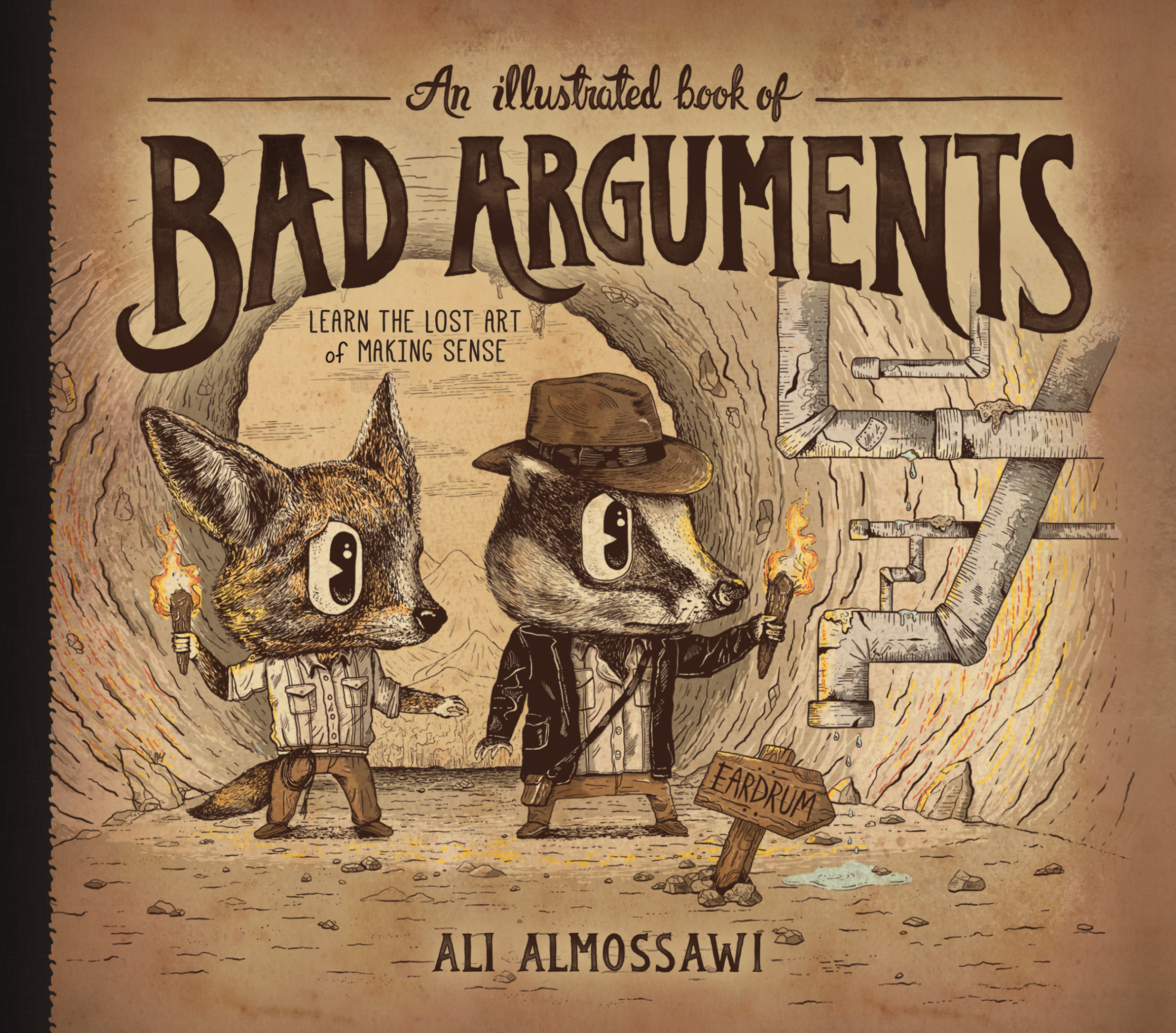 For the argumentative father: The Illustrated Book of Bad Arguments by Ali Almossawi
For the argumentative father: The Illustrated Book of Bad Arguments by Ali Almossawi
Does your dad love to rile everyone up with his argumentative nature? This book will allow him to perfect his debate strategy—it presents the most common logical fallacies alongside drawings of cute furry animals. The perfect antidote to fuzzy thinking! Even GeekDad.com agrees, saying “Share [this book] with your friends. Encourage your family members to flip through it. Casually leave copies in public places.”
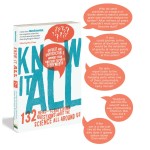
For the ‘Know It All’ father: Know It All by Mick O’Hare and New Scientist
Is your dad a know it all? (Or maybe he just fancies himself one!) If so, this is the book for him. With questions and answers drawn from the entirety of New Scientist’s readership, this book will unlock the answers to questions your father may never have even considered asking on topics ranging from physics to chemistry to zoology and beyond.
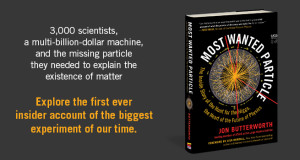 For the scientific father: Most Wanted Particle by Jon Butterworth
For the scientific father: Most Wanted Particle by Jon Butterworth
Particularly timely, Most Wanted Particle is the history of CERN’s original run of the Large Hadron Collider. Full of the science behind the Higgs-Boson particle, the road to starting the LHC, and the fascinating history behind the discovery of this particle, this book is perfect for the science and history lover.
 For the athletic father: Build Your Running Body by Armando Siqueiros, Melissa Breyer, Pete Magill, and Tom Schwartz
For the athletic father: Build Your Running Body by Armando Siqueiros, Melissa Breyer, Pete Magill, and Tom Schwartz
Your athletic father will enjoy nothing more this summer than this unbelievably comprehensive running guide. Not only is it a revolutionary fitness program, but he’ll love the extremely detail-oriented workouts with photos, training programs, race strategies, recipes, nutrition guidelines, interview with leading runners, exercise scientists, and coaches, and valuable tips on apparel and more!
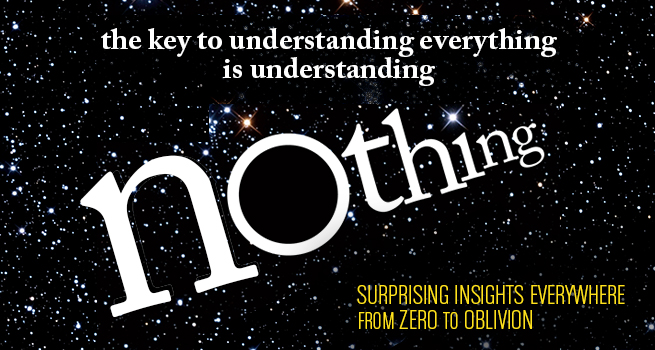
For the curious father: Nothing by by Jeremy Webb and New Scientist
It turns out that almost nothing is as curious—or as enlightening—as, well, nothing. What is nothingness? Where can it be found? If you have a curious or investigative father, this book is sure to keep him entertained.
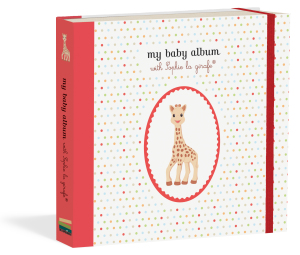
For the brand new father: My Baby Album with Sophie la Girafe
Pink isn’t just for girls, of course! This adorable baby album is perfect for any brand new father to remember all of his favorite moments with his little one.
So thank you, Dads, for all the memories you’ve helped to share and create over the years. Here’s to many more to come!
Posted in Blog
Comments Off on We’ve got you covered, Father’s Day shoppers
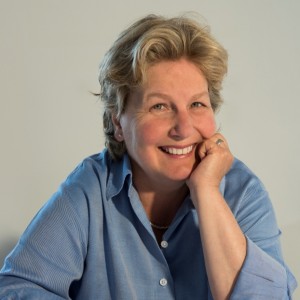 Sandi Toksvig, author of The Tricky Art of Co-Existing, is nothing if not a renaissance woman. An award-winning writer, presenter, and actress, hailed as the “Queen of the BBC” and a national treasure, Sandi’s most recent role is helping to launch the Women’s Equality Party in the UK to campaign for women’s rights.
Sandi Toksvig, author of The Tricky Art of Co-Existing, is nothing if not a renaissance woman. An award-winning writer, presenter, and actress, hailed as the “Queen of the BBC” and a national treasure, Sandi’s most recent role is helping to launch the Women’s Equality Party in the UK to campaign for women’s rights.
The Women’s Equality Party was formed as the result of a meeting on March 28 of this year. The party formed with the determination to become a force in British politics that would unite people of all ages, backgrounds, ethnicities, beliefs, and experiences in the effort to see women enjoy the same rights and opportunities as men in order to create a more vibrant economy and workforce. Shortly thereafter, on April 30, Sandi Toksvig announced her intention to leave BBC Radio 4’s News Quiz to help support the newly formed party. The announcement flooded headlines in the U.K.—BBC, The Guardian, Telegraph UK, and The Independent all ran news of Toksvig’s decision to leave the comedy show in favor of politics. After many years on the show she explained her decision by saying: “I have made jokes over and over again about politics and, do you know, this election I’ve had enough, and I have decided that instead of making jokes about it, I need to participate.” The party is aiming to run their first candidate in 2020.
In between her many commitments at the moment, Sandi found time to pen a guest blog for The Huffington Post on “How to Be a Good Email Citizen,” and her advice is as clever and pertinent as ever. The post combines her characteristic snark—“What makes you so bsy tht u hv 2 forget whole words?”—with her sound, practical advice on everyday etiquette —“The fact that this form of mail [email] is sent and arrives quickly doesn’t mean you can’t take your time to write them well.”
Given the number of hats Sandi has worn and continues to wear, we can all trust that she has more than mastered ‘The Tricky Art of Co-Existing.’ (How many people do any of us know who have helped to found a political party??) Her book is a modern day guide to manners—focusing not only on how to master politeness via social media and email, but how to successfully navigate everyday encounters as well. She teaches how to be the most decently behaved person in the room in addition to the most interesting–offering advice, trivia, characteristic wit, and a focus on decency, rather than convention.
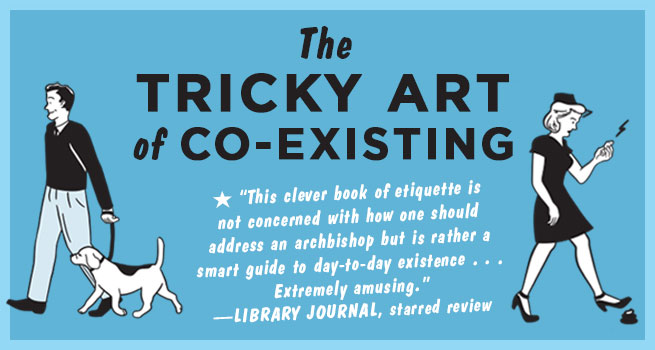 Available in stores and online now, The Tricky Art of Co-Existing is not only a testament to her many years of exemplary co-existing, but an indispensable guide for us all to live decently in a rapidly changing world.
Available in stores and online now, The Tricky Art of Co-Existing is not only a testament to her many years of exemplary co-existing, but an indispensable guide for us all to live decently in a rapidly changing world.
Posted in Blog
Comments Off on Sandi Toksvig: Master of Co-Existing

